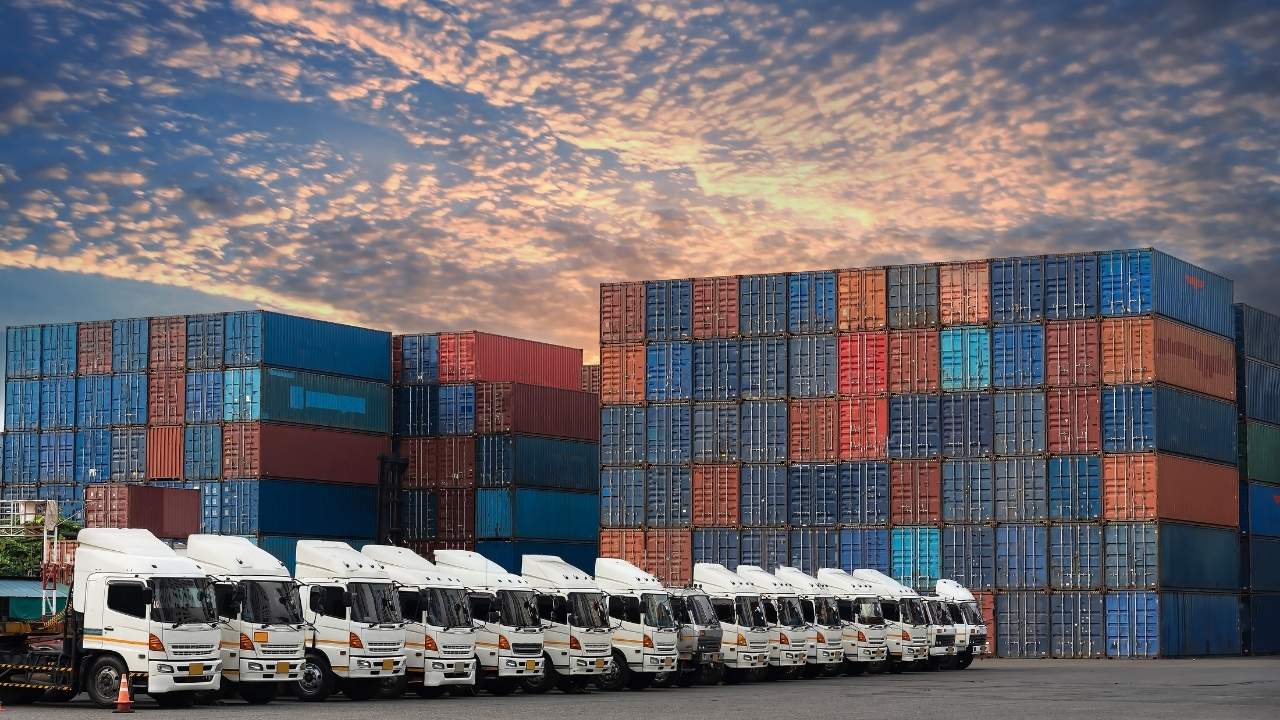Relationship Between Supply Chain Logistics and Inventory Management
Section 1: Deep Dive into Supply Chain Management and Logistics
Comprehensive Understanding of Supply Chain Management (SCM)
Supply chain management (SCM) integrates the flow of goods, services, information, and finances across a network of suppliers, manufacturers, distributors, and customers. It manages the entire lifecycle of a product, from the design and sourcing of raw materials to delivery to end-users.
Key functions of SCM include:
- Sourcing – Finding and acquiring raw materials from suppliers. It involves supplier selection, negotiation, contracts, purchasing orders, etc.
- Procurement – The purchasing process – placing orders, receiving goods, authorizing payments to suppliers.
- Production – Manufacturing products in factories. It covers production planning, scheduling, quality control, etc.
- Warehousing and storage – Safely storing raw materials, components, and finished products in warehouses and storage facilities.
- Distribution – Transporting goods to distributors, retailers, or directly to customers. It includes order processing, transportation management, and delivery.
By coordinating these functions, SCM provides end-to-end visibility and control over the supply chain to meet changing customer demands in a timely and cost-effective way.
Logistics in the Supply Chain
Logistics refers to the physical movement and flow of goods through the supply chain. It focuses on efficiently transporting materials and products from suppliers to manufacturers to distributors to end-consumers.
Types of logistics include:
- Inbound logistics – Transporting raw materials and components from suppliers to manufacturing plants
- Outbound logistics – Distributing finished products from plants to distributors, retailers or end-customers
- Reverse logistics – Returning defective, damaged, or expired products back through the supply chain
- Third-Party Logistics (3PL) – Outsourcing logistics activities like transportation, warehousing, and delivery to specialized 3PL firms
While SCM has a broader scope, logistics constitutes an important arm responsible for the movement of products through optimal routes and modes. Integrating logistics with SCM enhances supply chain efficiency through better coordination between transportation and inventory management.
Section 2: The Role of Inventory Management in Logistics
Inventory Management Fundamentals
Inventory management refers to the process of ordering, storing, and using components or products to ensure availability for production and sales. It strikes the right balance between supply and demand.
Types of inventory include:
- Raw material inventory – Components, substances used for manufacturing
- Work-in-progress (WIP) inventory – Semi-finished products going through production
- Finished goods inventory – Completed products ready for distribution and sale
By keeping optimal inventory levels, businesses can efficiently meet customer orders and prevent stockouts without incurring excessive carrying costs. Inventory is a vital link between production and logistics processes. For example, automobile plants rely on inventory management to have sufficient engine components available for vehicle assembly.
Key Inventory Management Techniques
- Demand-Supply Integration (DSI) aligns inventory planning with real-time customer demand. By integrating point-of-sale (POS) data and order forecasts, businesses can optimize inventory to match consumption patterns.
- ABC analysis classifies a company’s inventory into three categories – A, B, and C – based on Pareto analysis. ‘A’ items account for roughly 20% of total inventory but contribute to 80% of sales. ‘C’ items account for less than 5% of sales. This helps determine optimal stocking levels.
- Demand forecasting estimates customer demand over a specific future time period using historical data, predictive analytics, and machine learning models. Accurate demand forecasts enable efficient inventory planning and logistics management. For example, weather data can improve demand forecasts and stocking decisions for seasonal products like snow shovels.
Section 3: Interaction Between Logistics and Inventory Management
How Logistics and Inventory Work Together
Logistics and inventory management are interconnected to ensure a seamless flow of materials through the supply chain:
- Logistics transports inventory between suppliers, manufacturers, distributors, and customer locations through optimal routes.
- Sophisticated logistics tracking provides real-time visibility into inventory levels across the supply chain.
- By monitoring inventory consumption patterns, logistical plans can be adjusted to ensure timely stock replenishment.
- Integrated logistics and inventory data prevent overstock or stockouts, minimize costs, and meet customer expectations.
Optimization Through Inventory Control
Streamlining logistics operations can be achieved through rigorous inventory control practices including:
- Just-in-time (JIT) inventory systems stock goods to meet imminent production demand instead of relying on excess buffer inventory. This reduces storage costs and eliminates waste.
- Automated inventory replenishment uses predictive analytics algorithms to manage inventory levels. It generates purchase orders and organizes logistics for inventory replenishment based on projected demand.
For example, vendor-managed inventory (VMI) systems allow suppliers to monitor stock levels and location-based demand for their products in retailers’ warehouses. This enables timely restocking aligned with inventory consumption.
Section 4: Challenges in Managing Inventory and Logistics
Overstock and Understock Issues
Overordering inventory results in high holding costs for storage, warehousing, spoilage, and taxes. The excess stock also reduces the working capital available for other business operations. Finally, overstock can lead to write-offs from product obsolescence.
Understocking can negatively impact customer experience due to stockouts and unfulfilled orders. This affects brand reputation. Shortages during seasonal peaks can lead to losing customers to competitors.
The bullwhip effect further compounds challenges of demand-supply alignment – where variability amplifies as you move up the supply chain from retailers to manufacturers to suppliers. Maintaining optimal inventory alignment across the supply chain is vital.
Risks of Poor Forecasting and Inaccurate Data
Inaccurate demand forecasts can disrupt budgeting, production planning, and inventory management. Underestimating demand risks stockouts and lost sales, while overestimating demand results in markdowns to clear excess inventory.
Poor data quality in terms of incompleteness, inaccuracy, duplication, or obsoleteness also undermines effective inventory management and control. Businesses can mitigate these risks by:
- Leveraging historical sales data, predictive analytics models, and market intelligence to improve demand planning.
- Implementing data governance practices for consistent data collection, cleansing, and maintenance.
- Collaborating with supply chain partners to gain visibility into emerging consumption patterns.
Section 5: Best Practices for Logistics and Inventory Optimization
Strategies for Inventory Optimization
Keeping optimal inventory levels is crucial for meeting customer demand while minimizing carrying costs. Key strategies include:
- Dynamic stocking based on accurate demand forecasting, allows flexibility to scale inventory up or down. Machine learning algorithms can detect patterns and improve predictions.
- Agile inventory management to quickly adapt stock levels when requirements change. This lean approach reduces overstocks and stockouts.
- ABC analysis to classify SKUs based on revenue contribution. Manage high-value A-class items closely and keep lower-value C-class items at minimal stocks.
A Global Logistics Company cut inventory costs by 43% using demand sensing software, stocking the right items at the right time. Dynamic inventory management is critical across industries like retail, auto, high-tech, etc.
Warehouse Management for Efficiency
Efficient warehousing and inventory control ensures smooth logistics operations:
- Strategic warehouse location enables efficient transport connectivity and proximity to key markets
- Layout optimization, storage policies, and material flows maximize space and minimize handling
- WMS integration tracks stock items in real time, automates processes, and provides analytics-based insights
A leading 3PL provider attributes 25% increased productivity to its new WMS system, allowing faster order processing at reduced overheads. Optimized warehouses lead to leaner inventory and supply chains.
Reducing Costs with Logistics Integration
Integrating logistics and inventory management streamlines the flow of goods while lowering costs:
- Carrying cost reduction – Lower average inventory due to demand-driven lean stocking
- Increased visibility – Real-time tracking of orders and inventory across supply chain network
- Improved productivity – Automation, optimized workflows, and inventory control procedures
A full-scale Enterprise Resource Planning (ERP) implementation at a grocery distributor helped reduce logistics and warehousing expenses by 30% annually. Integrated systems are essential for efficient operations.
Section 7: Case Studies and Real-World Applications
Successful Inventory Management in Logistics
A cold storage 3PL company suffered massive losses due to poor inventory records, stockouts, and spoilage. By implementing a WMS, they achieved 99% inventory accuracy. Stock visibility improved the coordination between warehouses and transporters.
Warehouse Management and logistics control combined with data-driven inventory management is critical, as highlighted in these examples.
Section 8: Emerging Trends in Supply Chain Logistics and Inventory Management
Emerging Technologies Shaping the Future
- Autonomous vehicles and drones will transform warehouse operations and last-mile delivery
- Blockchain enables the tracking of goods and documents across the supply chain in a decentralized ledger
- IoT sensors allow real-time monitoring of inventory conditions like temperature, humidity, etc.
Future logistics infrastructure will leverage these technologies for automated, efficient, and transparent processes.
Evolution of Inventory Strategies
- Continued shift towards just-in-time inventory management over traditional techniques
- Focus on reducing waste in supply chain processes
- Inventory optimization using AI-based simulations of various stocking scenarios
Logistics and fulfillment strategies will be based on accurate demand forecasts. Inventory planning will be integrated across the supply chain.
Section 9: Frequently Asked Questions
Q: What is the role of logistics in inventory management?
A: Logistics provides the crucial link between supply locations and inventory hubs/outlets. It enables the continuous replenishment of stocks to meet consumer demand. Inventory placement planning, transport capacity allocation and warehouse space optimization are interconnected with logistics operations.
Q: How can Versa Cloud ERP help optimize inventory and logistics?
A: Versa Cloud ERP delivers real-time visibility across the entire supply chain network. It integrates inventory control, warehouse management, logistics, and fulfillment functions through a unified platform. With Versa, businesses can leverage embedded analytics, predictive algorithms, and automation capabilities for efficient inventory planning and positioning.
To experience Versa Cloud ERP benefits schedule a free demo today!
Conclusion
Inventory management and logistics synchronization are critical to improving customer service levels while controlling supply chain costs. Technological capabilities can help optimize stocking locations, transport capacity, and warehouse utilization for maximum efficiency.
As the retail landscape gets more competitive, data-driven integrated solutions like Versa Cloud ERP will be indispensable for logistics and inventory optimization.
A Business in the modern day is complex and requires resources to deliver on its goals and achieve its full potential. To create a small business success story business owners need an ERP system that grows with them.
Effectively manage your financials, inventory, and production workflows with our award-winning ERP.
Let Versa Cloud Erp’s do the heavy lifting for you.
[widget id=”custom_html-40″]
[widget id=”custom_html-42″]
[widget id=”custom_html-30″]
Do Business on the Move!
Make your businesses hassle-free and cut the heavyweights sign up for the Versa Cloud ERP today!!
Join our Versa Community and be Future-ready with us.
[widget id=”custom_html-20″]






